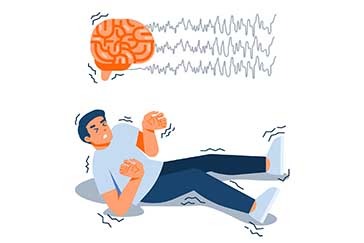 Book Appt.
Book Appt.
 Call Now
Call Now


A foraminotomy is a surgical procedure that relieves pressure on the nerve roots in your spine. This treatment opens the foramen, which is the aperture in your vertebra bone where your nerve roots escape your spinal canal (the tube that houses your spinal cord). The nerves that escape your spinal canal via the foramen comprise your peripheral nervous system. If your foramen is narrow, you will have nerve discomfort and other movement-related problems. A foraminotomy can remove this pressure, reducing your pain.
Types of foraminotomy
You may hear your surgeon specify the site of your foraminotomy. These are the same processes; however, they happen in various areas on your spine:
What does a foraminotomy treat or manage?
Foraminotomy is a procedure used to treat spinal stenosis. This is the narrowing of the space inside your spinal canal. Foraminal stenosis occurs when the neural foramen (the opening in the spinal column where nerve roots exit the spinal canal) is too narrow. When your nerve roots do not have enough space, the following symptoms occur, which might disrupt your everyday routine:
Procedure Details
Preparation
You will meet with a surgeon before undergoing a foraminotomy procedure. They will do an examination and review your medical history. They will also prescribe imaging tests, such as an MRI or a CT scan, to help them design the treatment. Inform your surgeon about any medications or supplements you are currently using, particularly if you use blood thinners. To avoid surgery-related adverse effects, they may adjust the dosage or prescribe a new drug. Make no modifications to your prescriptions until your healthcare physician allows them. You should also check in with any specialists you see on a regular basis to ensure you're healthy enough to have surgery, such as if you have heart disease or diabetes. Your surgeon may advise you to quit or minimize your usage of nicotine products and alcoholic beverages, as they can interfere with your body's ability to heal following surgery.
During foraminotomy
On the day of operation, an anesthesiologist will administer general anesthesia. This will put you to sleep, preventing you from feeling discomfort. Your surgeon will:
After foraminotomy
After a foraminotomy, youll likely stay overnight in the hospital for observation. When you wake up, your care team will give you medications to ease discomfort. You should be able to sit up about two hours after surgery. You wont be able to drive yourself home from the hospital, so youll need to ask someone for help. You should be able to drive within one to two weeks following the procedure.
Youll need to be very careful about your movements after surgery, especially moving your neck if you have a cervical foraminotomy. Your care team will explain what movements are safe and how you can manage your surgical site when you go home. Theyll also give you instructions on how to take care of yourself and who to contact if you have any questions or concerns. Your surgeon will schedule an exam to check how your body is healing a few weeks after the procedure. You may need to see a physical therapist to exercise and strengthen your muscles.
Benefits
A foraminotomy relieves nerve pressure. This can improve symptoms like nerve pain, numbness, and difficulty moving. It can prevent complications of stenosis like chronic pain.
Risks
The risks of a foraminotomy are uncommon, but they include bleeding, infection, blood clots, nerve injury (weakness, discomfort, loss of feeling), spinal instability, little to no relief of symptoms or symptoms that return, and limited movement of your neck and back. Your surgeon will share these risks with you prior to your treatment, allowing you to make an informed decision regarding your health.
Conclusion
Foraminotomy is a surgical procedure that relieves nerve compression caused by foraminal stenosis or other spinal disorders. This treatment relieves pressure on the spinal nerves by enlarging the foramina, which reduces discomfort and improves function. Minimally invasive treatments provide for faster recovery times and lower dangers. If you have nerve compression problems, you should visit a spine specialist to see if foraminotomy is the best treatment choice for you. For information, visit SHALBY Sanar International Hospitals in Gurugram.
SHALBY Sanar International Hospitals provides extensive medical procedures backed up with our state-of-the-art technology and a team of highly qualified & experienced clinical experts.

Patient from Iraq gets treated by Dr. Harnarayan Singh | SHALBY Sanar International Hospitals

15 year old Patient from Liberia gets treated by Dr Harnarayan Singh | Neurosurgery & Spine Surgery

Mrs. Khalida Khaleel from Iraq Overcomes Degenerative Disc & Grade 1 Spondylolisthesis

Successful Treatment of a Patient from Uzbekistan for Degenerative Disc Disease and Back Syndrome

Surviving Stroke: Bipasha Banerjee's Testimony on Timely Intervention

Successful Intraoperation Neuro Monitoring on patient Hasan from Iraq

Successful removal of Glioma using advanced machines

A multidisciplinary care worked wonders for Ms. Akhtamova from Tajikistan

Treatment for Brain Aneurysm - Al Qumairi Saeed Mohsen Awadh from Yemen
Our doctors pen down their research findings and experiences from time to time. Their words provide deep insight into the latest techniques, technologies and other advancements in healthcare. It provides expert answers to all kinds of health questions for real-life issues.
VIEW ALL




Since the day of its foundation, SHALBY Sanar International Hospitals is committed to provide comprehensive healthcare services. It regularly organizes awareness programs in its premises and encourages outdoor healthcare activities and camps with an intent to put focus on preventive healthcare.
VIEW ALL